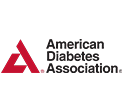More Patients Choosing Hospice “Comfort Care” Option
In today’s health care environment, so much attention is paid to preventing and eradicating disease to improve health outcomes. But for patients facing terminal illness or life-limiting conditions, accessing quality care can be a frightening and lonely challenge.
That’s where hospice comes in as an option for more and more people. A unique philosophy of care, hospice enhances quality of life for many patients and strengthens the health system’s quality of care by saving critical resources.
Supporting those who choose comfort care with pain and symptom management rather than curative care, it is designed to neither hasten nor postpone death. Hospice is provided in the patient’s home, hospital, extended care facility or residential care homes. Individual insurance plans vary in terms of coverage guidelines.
According to the National Hospice and Palliative Care Organization (NHPCO), an estimated 1.65 million patients received services from hospice in 2011.
“It is important for patients to understand that hospice is as much a part of the health care system as the birthing process,” says Barbara J. Westland, RN, BSN, Director/Administrator, BJC Ho
Because hospice focuses on care rather than cure, patient outcomes are measured in more qualitative ways, focusing on issues like pain relief within 48 hours of admission, avoiding unwanted hospitalizations and avoiding unwanted cardiopulmonary resuscitation (CPR). And according to NHPCO, family caregivers who had the support of hospice report less instances of serious depression in the six months following the death of their loved one.
In addition to serving the physical, emotional, spiritual and practical needs of patients and their families, hospice also saves money. In fact, research published in the March issue of Health Affairs found that hospice enrollment saves money for Medicare – from $2,561 to $6,430 per patient, depending on the length of care – and improves the quality of care across a number of different lengths-of-stay.
“If 1,000 additional beneficiaries enrolled in hospice 15 to 30 days prior to death, Medicare could save more than $6.4 million,” notes the study’s authors. “In addition, reductions in the use of hospital services at the end of life contribute to these savings and potentially improve quality of care and patients’ quality of life.”
J. Donald Schumacher, NHPCO president and CEO, points to a study on the benefits of hospice from a cost and quality of care perspective:
“Hospice can reduce the number of intensive care visits, hospital readmissions and other services, which not only saves health care system dollars, but also contributes to a higher quality of life,” he says.
“With the aging population, we expect to see the hospice population growing,” Westland says, noting that between 2000-2007, the number ofhospice patients nearly doubled and the number of providers grew by 45 percent. “Hospice offers a choice for the final journey that is selected by some, but not right for everyone.”
Despite evidence that hospice provides many benefits some critics question whether the implications of market competition and commercialization driving this form of care are ethically consistent with the delivery of health services. In an article that appeared in the Journal of Law, Medicine and Ethics during the summer of 2011, the authors argue that hospice care should be considered with great caution:
“The conflicting interests inherent in the incentive structures of for-profit health care endeavors demand careful scrutiny,” they say. “This is particularly important in the end-of-life hospice context.”
What do you think? Share your experiences and thoughts with us.



















